 Historically, bells in colonial market houses were used to signal the open and close of each business day, which is similar to the use of bells today at the New York Stock Exchange. When our new Market House bell starts swinging next month, it will signal the completion of all the hard work of the men and women at the Armoury, the Joiner, and across the Colonial Williamsburg Foundation.
Historically, bells in colonial market houses were used to signal the open and close of each business day, which is similar to the use of bells today at the New York Stock Exchange. When our new Market House bell starts swinging next month, it will signal the completion of all the hard work of the men and women at the Armoury, the Joiner, and across the Colonial Williamsburg Foundation.
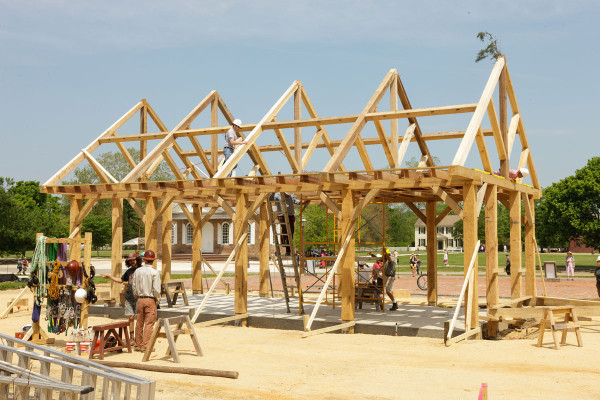
The latest reconstruction project along Colonial Williamsburg’s Duke of Gloucester Street is a structure known as the Market House. Sitting just to the front and side of the octagonal Magazine, the Market House is going to be the new permanent location for our outdoor market. Instead of rough timbers holding up a stretched canvas roof over crushed oyster shells, this new structure is being built with precisely shaped and cut lumber and a pitched roof, sporting hundreds of handmade shingles over a large expanse of tens of thousands of bricks provided by our very own brickyard. And sitting atop this beautiful new structure? A gorgeous bronze bell made just for us by the Whitechapel Bell Foundry in London.
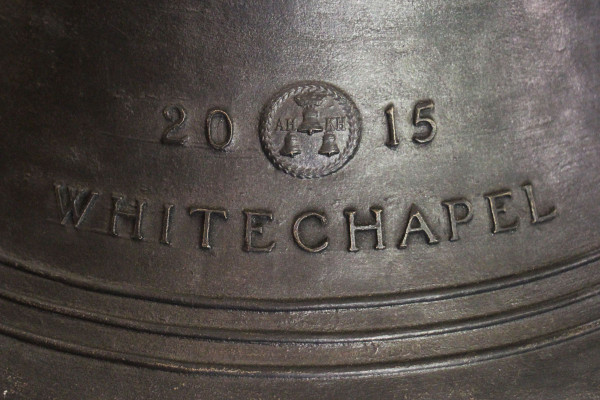
Known as “the world’s most famous bell foundry,” the Whitechapel Bell Foundry, founded in 1570, is responsible for the enormous 27,000-pound bell known as Big Ben, the famously cracked 2,080-pound Liberty Bell on display in Philadelphia, and unofficially (though accepted as fact via oral tradition), the bell at the top of the steeple at Williamsburg’s own Bruton Parish Church.
That bell, gifted to the church by James Tarpley in 1761, was photographed and studied by our Master Blacksmith Ken Schwarz. Ken climbed way up beyond the ladders to get a closer look at how it is secured to the headstock (more on this a little later), how it swings, and most importantly how the iron hardware helps the bell to do its job.
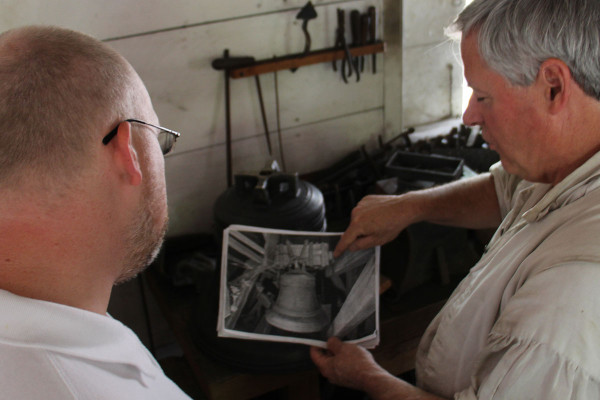
The bell we received from Whitechapel is just the bell—a bronze casting a little more than 17″ in diameter, 14″ in height, and weighing in around 120 pounds. When you think of bells ringing, you probably picture large, free-swinging bells with clappers dropping to ring the bell as they stop their swing in one direction to swing down and return in the other.
The reality is that this bell will be attached securely to a large piece of wood known as the headstock (or yoke) and with the help of a variety of bands and bolts, the entire headstock and bell assembly will swing as one unit. It is taking the combined effort of Ken’s team at the Anderson Armoury and Ted Boscana’s team at the Joiner to get the headstock and hardware fabricated, the bell mounted, and the whole assembly installed in a turret to be ready for installation on the Market House.

The clapper inside the bell hangs freely from a d-ring-shaped bracket called the staple, which sits way up in the crown of the bell. When the bell is being rung and reaches the end of its swing in one direction, that clapper continues to move and crashes into the “top” side of the bell, generating the actual sound. Ken has been studying book after book to find out the perfect length and weight for the clapper. Too heavy and it can crack the bell. Too light and it won’t ring the bell hard enough. And if it’s too long or too short, it will hit the bell in the wrong place which could also cause damage or produce the wrong sound. After poring over everything from colonial-era documents to more recent Russian standards guides, Ken has settled on a 4.5-pound clapper where the center of the ball hangs directly inline with the bottom lip of the bell.
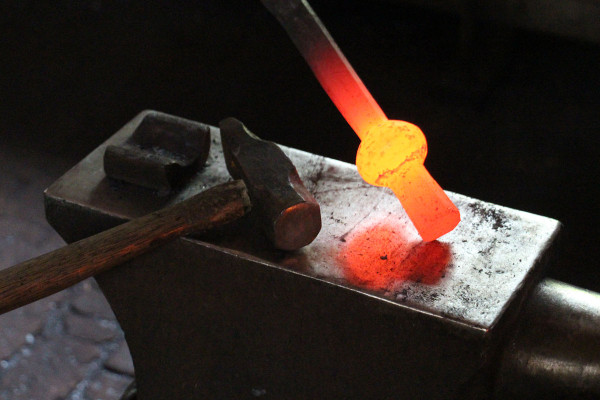
The hardware securing the bell to the headstock is all made from raw bars of iron in Ken’s shop. Four stout rectangular bands help strengthen the wood of the headstock to ensure against future stress and cracking. A unique pair of clamping pieces surround the headstock and draw the bell tight against the wood preventing any movement during the swing. Two thick bolts running top to bottom meet with and reinforce two rods coming in from either end of the headstock that act as an axle for the entire assembly to swing on. Finally, two bands surround the circular wooden protrusions that assist the axles during the bell’s swing.

Upon completion, the bell and headstock assembly will be installed inside a turret being constructed at the Joiner. And on June 1, between 8 a.m. and noon, the entire turret with the bell firmly attached will be lifted with a crane to its final resting place atop the Market House. If you’re unable to make it here to watch the raising in person, keep an eye on our webcam which is currently aimed at the Market House construction project.
After some attaching and finishing work, a rope will be run down through the roof which will allow the bell to ring with a loud and beautiful strike tone of C that will be heard throughout the Historic Area.
I made sure to visit Ken several times over the last couple weeks so I could see as much of the ironwork fabrication as possible. In addition to the photos above, please enjoy this video of Ken cutting and shaping the top end of the clapper followed by a gallery of photos I took documenting the process.
Have you been following the progress on our Market House? Do you plan to visit us to see the finished results next month? Share your thoughts in our comments below!

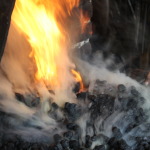
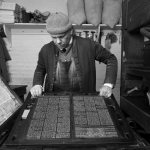
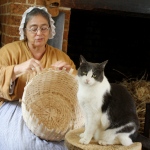
[…] the Market House bell won’t be the only sound to signal the beginning of the work day in the Revolutionary City. […]